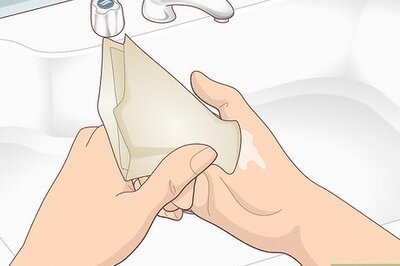
views
Using the Penny Test
Place a penny into any tread groove on your tire.
Rotate the penny so Abraham Lincoln’s head is upside down and inside the tread.
Determine whether you can see Lincoln’s entire head when the penny is inserted into the tread groove. Your tires are considered safe and legal if a portion of Lincoln’s head is covered by the tread. However, if you can see Lincoln’s entire head after inserting the penny into the groove, you may need to replace your tire.
Repeat steps #1 through #3 in various grooves all over your tire. If Lincoln’s head is visible in any groove, the tire may need replacing.
Using the Quarter Test
Place a quarter into any tread groove on your tire.
Rotate the quarter so George Washington’s head is upside down and inside the tread.
Determine whether you can see Washington’s entire head when the quarter is inserted into the tread groove. If a portion of Washington's head is always covered by the tread, your tire has more than four thirty-second of an inch of tread depth remaining, which indicates your tires are still in good condition.
Repeat steps #1 through #3 in various grooves all over your tire. If Washington’s entire head is visible in any groove, you may need to replace the tire.
Examining the Treadwear Indicator Bar
Examine your tire to locate the treadwear indicator bars molded into the tread grooves. These “bars” are located at the bottom of tread grooves in various locations all over your tire, and can help you visibly determine whether your tire tread is low.
Check to see whether the treadwear bars are flush with the adjacent ribs. If so, this means your tire tread measures in at two thirty-second of an inch, and the tire should be replaced.
Using a Tread Depth Gauge
Purchase a tire tread depth gauge from any auto parts store. Most models of tread depth gauges cost between $3 and $8 from any auto parts retail store.
Place the end of the probe into any tread groove on your tire.
Push down on the base of the gauge until the shoulders of the device lie flat against the tread block.
Grab the barrel of the gauge and carefully remove the device from the groove without touching the probe.
Make note of the tread depth reading.
Repeat steps #2 through #5 on various parts of the tire. This allows you to find out whether any grooves in your tire measure higher than two thirty-second of an inch, and whether your tire needs replacing.




















Comments
0 comment